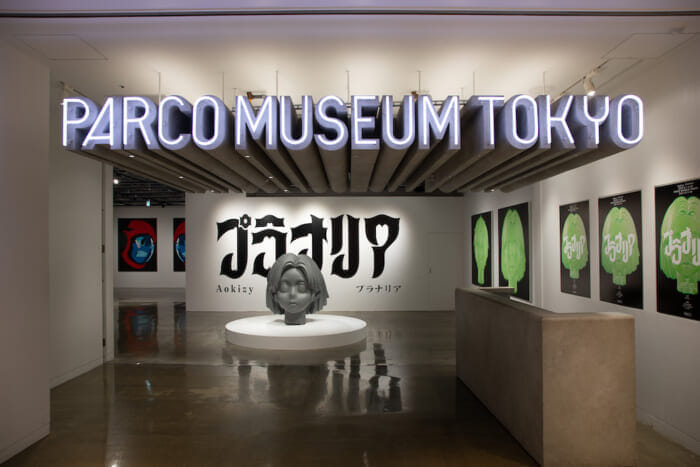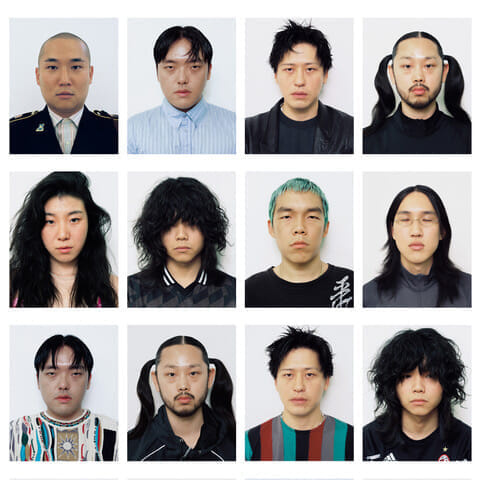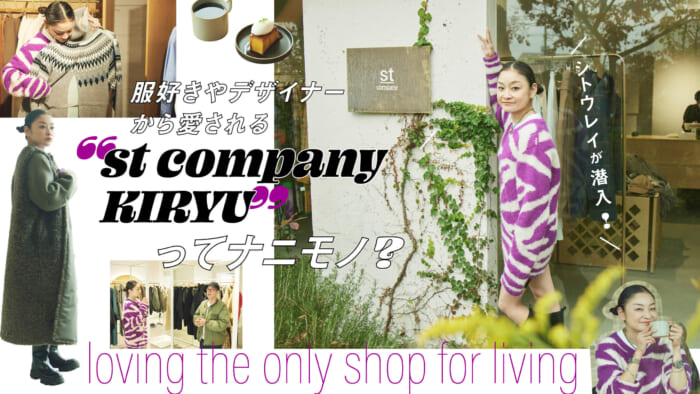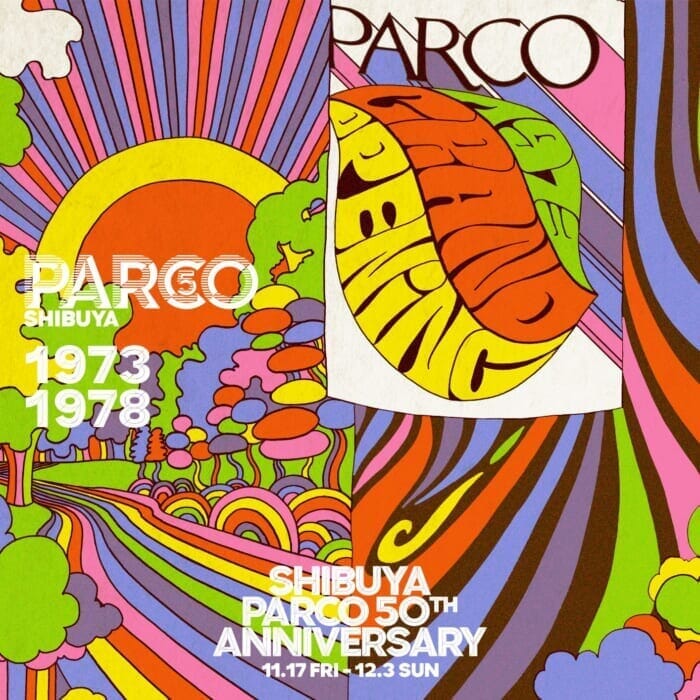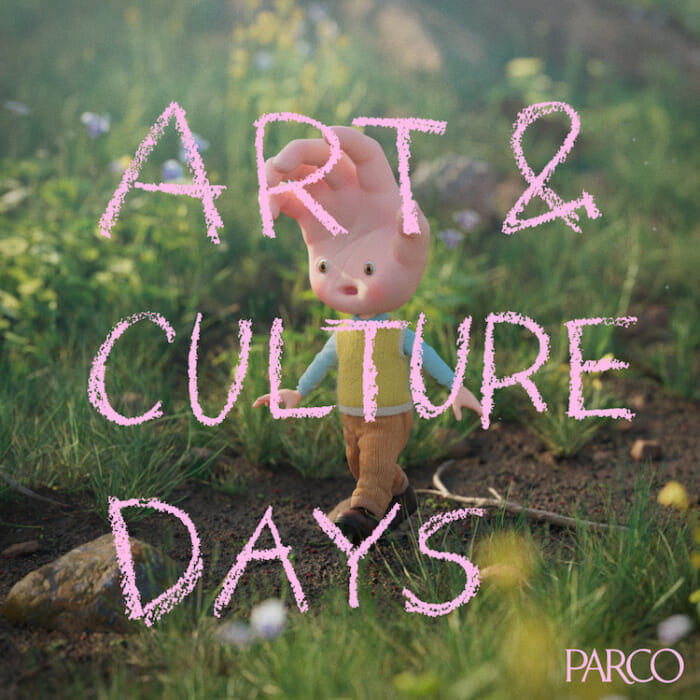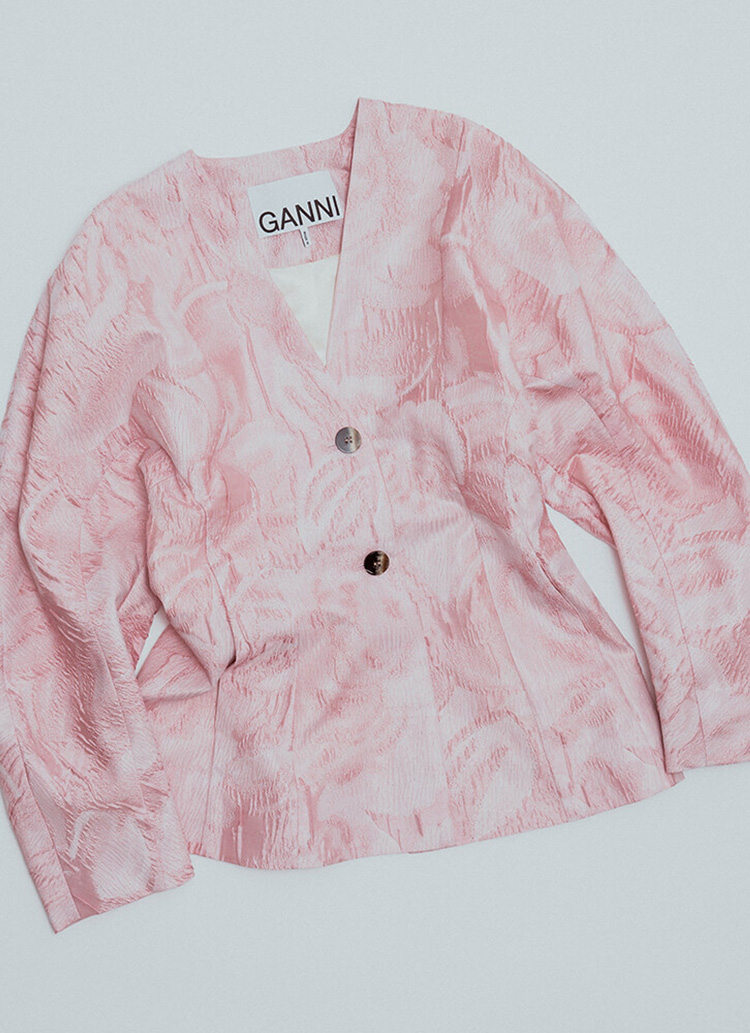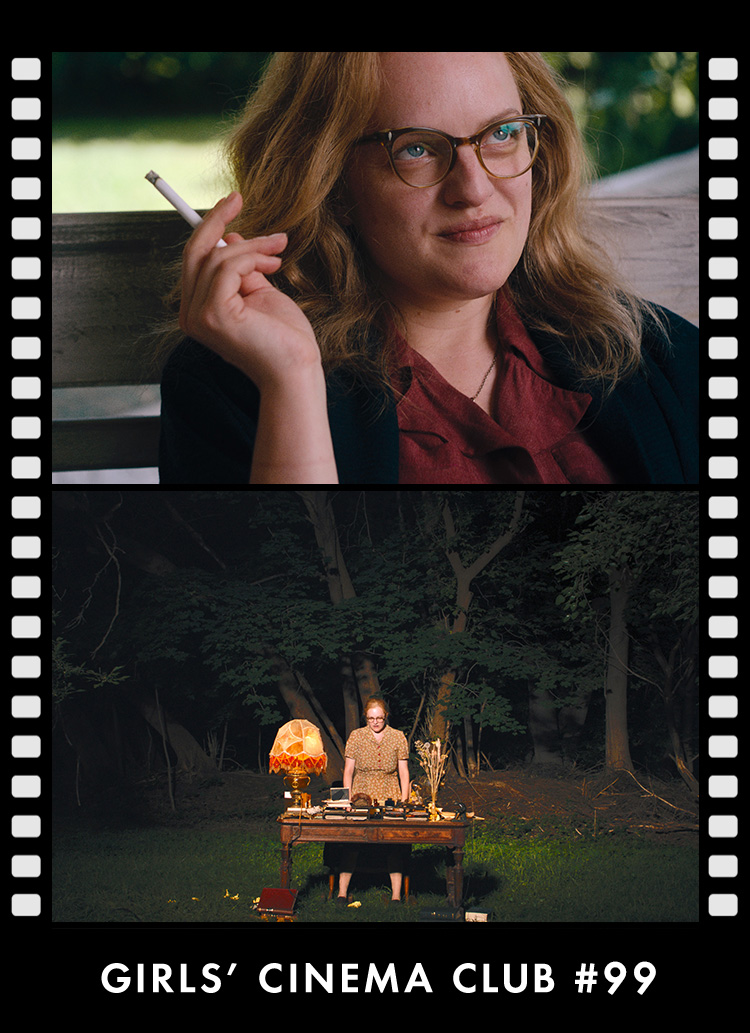PROFILE
Essayist and cartoonist, born in 1978. Graduated from Tama Art University, Faculty of Art and Design, Department of Fine Arts, Second Division. Made her debut in 1997 with the manga "Goriko the High School Girl" (1997), which she drew while still in high school. She has published essays and novels on the web and in magazines, and her books include "My Little Setagaya" and "Girl Friend. She is also a regular on "After 6 Junction" (TBS Radio). She grew up in a culturally rich family: her father is photographer Shinzo Shimao, her mother is photographer Tokuko Ushioda, and her grandfather is novelist Toshio Shimao. She herself gave birth to her first child in 2015.
You can get in touch with art and nature.
Shimao-san, do you come to Parco often?
My son loves Mario, so we come to the Nintendo store. It is different from the Parco that I used to come to when I was a student, but I really like the Parco of today.
This time, under the title of "SHIBUYA PARCO ART WEEK 2021," artworks are scattered in various locations, and visitors can view them as they make their rounds.
Unlike a museum, it is located in a lively fashion building. People can see art while they come to look at clothes. People who don't have the habit of going to art museums can also enjoy the art and nature.
I see. Let's go around in order!
[SPOT1] Jean Jullien Exhibition "PAPER PEOPLE

PARCO MUSEUM TOKYO (4F)
PARCO creates exhibitions of new things and events from its own unique perspective, without regard to genre or borders, including art, design, fashion, subculture, young talents from Japan and abroad, and people who are active on the world's front lines. PARCO's directly operated museums provide enjoyment to visitors and transmit culture to the rest of Japan and the world.
Not what I expected. And to the fans.
Jean Jullien is a French artist who is already popular as an illustrator.
I follow you on Instagram, but I have never followed your work that closely, and I thought it was a poster exhibition with a retro style in the style of *Savignac. But in fact, it's totally different. It was like a still-life painting, and I could feel the dynamic touch of his brushstrokes. The choice of motifs is also very tasteful and colorful, and I became a fan.
*Raymond Savignac - French poster painter. He led the industry with his innovative techniques for the time, combining human and animal motifs in product advertisements and using clear shapes and colors.

The works here capture the beautiful world around the artist, such as the sea in his hometown of Brittany, his hobby of surfing, various creatures, and children's toys.
I feel from his work that there is no difference between on and off. I also sympathize with the fact that he is so close to life and captures the everyday, and I think he is looking at the details of life. I also felt that his paintings of the ocean and surfing are trying to depict something universal that lies further beyond the everyday.
The best way to notice an artist's detailed point of view is to see his or her work in person. In your essay, I get the sense that you are looking at life in its entirety. Your expression is an extension of your daily life.
It is easier for me to work when there is no difference between my daily life and my works. For example, when I am walking down the street, the points of interest of people I pass in passing may become the inspiration for my work.

【SPOT2】 Jean Jullien Exhibition "POCKET PARENTS

NANZUKA 2G (2F)
An art space by NANZUKA, located in the new "2G" studio by MEDICOM TOY, Motofumi "Poggy" Ogi, Daytona International, and NANZUKA. It regularly introduces a variety of artists' works, including exhibitions linked to the contents of the studio, such as art toys and a concept store.
03-5422-3877(NANZUKA)
Official Site
What can't be painted in paintings, and what can be done in comics?
Next is the Jean Jullien exhibit, also in a different tenant. The comic books on the wall are eye-catching. This is a fictional story revolving around a couple named Vivi and Nino, their son Albert, and a character named Tibo whom the couple met. I wonder if the characters are a bit like my own family.
Jean Jullien's own family is at the core of his life, which is why he was able to create this story. I wondered if comics depict what the paintings I just saw cannot express. I am not very familiar with comics by foreign artists, *I only know Daniel Clowes.... Maybe the reason why there are so many of their fans in Japan is because they are attracted by their flamboyant sense of style and calm observation.
*Daniel Clowes - American cartoonist, illustrator, and screenwriter. He is known for his unique worldview, which straddles the everyday and the extraordinary, his lovable characters, and his snappy dialogue. He also wrote the screenplay for the film "Ghost World" (2001), starring Scarlett Johansson and others.

The exhibition I just mentioned, as well as this work by Jean Jullien, were all created during the year and a half of the Corona Disaster.
That's great. You must be very excited with your brush strokes. My friend Kotao, a contemporary artist, is also very popular, and I have the impression that many artists today are prolific. I wonder if it has something to do with the fact that we live in an age of social networking sites that demand frequent updates...?
Jean Jullien is a prolific artist with a wide variety of expression methods, and this Art Week is a great opportunity to experience his creativity in all its glory. By the way, the three-dimensional works of which you are taking a picture are priced at a little over 1,000,000 yen for a set of three.
Surprise!
They are made in Japan of solid bronze, and each one is handmade. There are only 25 sets in the world... The quality is well worth the price.
【SPOT3】 # Hotel Kawashima

Almost Sunday (8F)
Almost Sunday" is a real space of "Almost Nikkan Itoi Shimbun," which Shigesato Itoi presides over. While "Almost Sunday" delivers daily content from its website, this real space will host a variety of events. Exhibitions, events, live performances, talk shows, etc., provide "live" encounters.
03-5422-3466
Official Instagram
Isn't a hotel a little creepy?
This is a "hotel" themed exhibit created by comedian Akira Kawashima of the Kirin Comedy Company. Inside, visitors are divided into four rooms, where they can enjoy the unique exhibition while experiencing the facilities associated with the hotel in each room. The manager, Mr. Kawashima, will be at the exhibition today, so let's talk with him and Mr. Shimao.
Shimao:In the guest room style room, I liked the "view only found in # Ophthalmology". They used a lot of hashtags, and I felt their attention to hashtags.
Kawashima:Originally, I was doing my own "Hashtag Great HappinessI see that "hashtag" has evolved in various ways to become the current exhibition. I like hashtags because they are a bit unique. In general, a hashtag can be used as a title, and it can also be used as a commentary. It's like having a picture frame. Without hashtags, words like "tsukkomi" (a comedic commentary) would seem a bit harsh, but when you use hashtags, the temperature drops once and it becomes just right.
Shimao:The bathroom room, with its shower of warm and cold words, was also a great idea. I thought it was like the bathroom in the movie "The Shining".
Kawashima:Yes, I wanted to make it creepy. Hotels are a bit creepy, aren't they? Just by putting a sign that says, "We have cleaned and made the beds" where people used to sleep until yesterday, I thought everyone could sleep in peace.


Do you like horror movies?
Kawashima:I like horror a lot...or I did. I used to rent a lot of those films and watch them all the time, but I thought it was no different than comedy. Tension and relaxation. And episode talk and ghost stories are similar.
Shimao:Speaking of comedians, I am reminded of the Hotel Ibis in Roppongi, which was featured in the variety show "Ametalk! I am reminded of the now defunct Hotel Ibis in Roppongi, which was featured on the variety show "Ametalk!
Kawashima:This exhibition is already prefaced by the idea of a hotel, which almost everyone has stayed in at least once and can imagine. That is why the guest rooms have a business hotel style. I hope that visitors will enjoy the exhibition, which they can experience not in 2D but in 3D, by using this pretense.

Akira Kawashima, the manager, responded sincerely to our interview after the recording of the morning information program "Lavit. At the exhibition, you can see a lot of his brain.
【SPOT4】 Kensaku Kakimoto Exhibition "Spanning Time

GALLERY X (B1F)
From art culture to animation, games, and music, PARCO's edgy curation brings out new attractions.
03-6712-7505
Official Instagram
Official Site
*The exhibition has already closed.
Just doing it is fun.
Kensaku Kakimoto, a filmmaker and photographer active in the advertising and art worlds, will be exhibiting his work. In the video at the back of the room, an AI listens to music, and the AI, inspired by the music, filters the image into Kakimoto's photographs.
You can do such a thing, very interesting technology. If you collaborate with Mr. Kawashima mentioned earlier, there seems to be a synergistic effect (laughs).

In another corner, you look through a scope and press a pedal, and the image you are looking at at that moment is printed out on thermal paper.
How many pieces can I take home? Very fat. Did you know that there used to be something like this for the Game Boy? It was called "Pokemon Printer. It brings back memories. Of course, I think the customers want to get the works, but it's also fun just to play with them.
A person's daily life is at the root of his or her work.
Now that we have had a chance to look around with you, I see that your style is to look at the works quickly and without referring to explanations.
I am impatient. Even with electronic devices, I move them first without looking at the instructions! When viewing art, I sometimes look at the explanations, but more often than not, I go around quickly. I look at a work once and then read the explanation of the work I am interested in again. If I may ask you in the opposite direction, do you often look at such explanations?
I think that's true. I think this is often the case with contemporary art, but if you don't see something that you can't grasp unless you understand the concept, you often end up with a "? I think there is a lot of contemporary art, but if you don't look at it, it often ends up as "?
In that sense, if anything, I may not see much contemporary stuff. But I want the works themselves to be explained properly, and the easier they are to understand, the better. When I was a student myself, I had several opportunities to show my work at the Department of Film and New Media, but young students tend to feel as if they are being asked to feel, and they tend to fall short on explanations. It would be more helpful if the type of painting materials used were clearly described, and if there were standard explanations, the viewer would be able to see the work without noise. In the work by Mr. Kakimoto mentioned earlier, listening to the explanation of AI and other technologies helped me to better understand the work itself.

Are there any other artists that caught your attention today?
Jean Jullien. I really felt empathy with the way she painted everyday life.
Shimao-san, you often write essays about everyday life.
I believe that a person's daily life is at the root of his/her work, and if it is only superficially stimulating, it will not have any depth. I think it is more interesting for the viewer if the work has something that reflects the viewer's own self.
The impact was more than the works viewed themselves...

Shimao ordered the hot cocoa for 500 yen (tax included). Hamanoya Parlor also offers sandwiches and cream sodas that can be eaten quickly. Just right for viewing or after shopping.
I was wondering if you could tell me a little bit about the past. Simao-san, you used to be an Olive Girl, and I wonder if art was a required general education subject for Olive Girls in the 1990s?
Indeed, visiting art museums and exhibitions on holidays was one of the images I had of Olive Girl. Hara Museum of Contemporary Art, for example. The 21st Century Museum of Contemporary Art, Kanazawa and Naoshima were a little later than Olive, but I have the impression that many lost Olive girls visited them after the museum ceased publication. By the way, the first exhibition I went to alone was when I was in high school. It was the "Yoshikazu Hiruko Exhibition" at Art Wad's Gallery on the second floor of the building next to Space Hyakka, which was located near Shibuya Parco.
That's kind of like you, Shimao-san (laughs). Do you think your appreciation of art then shaped who you are today?
I wonder. I think I was influenced more by the places and times I went to see the works than by the works themselves, as well as the episodes that took place during that time. Hiruko-san's exhibition was just that. I think it gives me something to write about when I write.
A: Looking back, are there any works that stand out in your memory?
In 1994, there was a late-night Fuji Television program called "Config System. It featured short films by eminent actors such as Morio Agata, Norimizu Ameya, Shungiku Uchida, Keralino Sandorovich, Tomorowo Taguchi, Pierre Taki, and many others. I think the main director was Kenchi Iwamoto. Looking back on it now, I think it may have been art that greatly influenced me. I didn't know all the performers, but I just saw a lot of weird images of suspicious adults late at night. I was also impressed that Makoto Aida's "Giant Fuji Squadron vs. King Ghidorah" was used in the film.
Now let's talk about your relationship with art. What do you think has changed between now and the past?
Art used to be something that I thought was "unbeatable. It was something like a betrayal of an idea, or simply a good drawing! Or, simply, "good at drawing! It's hard to verbalize what was good and what was not, but in the sense of overwhelming people, I felt that it was impossible for me. There were some things, such as the "config system" I mentioned earlier, that I did not notice at the time, but later on I realized that they were art. The Tonneruzu comedy and the presence of Tamori. I felt like I was being jabbed by such art hidden in everyday life.
But as I get older, I realize that there are many moments of art in my daily life and work. In other words, the definition of art is becoming looser. Whether or not there is a price attached to it, there is a difference. However, it is a bit embarrassing to immediately say, "This is art, too, isn't it? You see a child playing in the dirt, or a messy room, and you dare to say that, don't you? Even though it's just messy (laughs).

I think I understand (laughs). If there is no artifice or calculation, it tends to be put in the art category. Now, you must be about the same age as the Olive Girls. Do you think that adolescents today have a different attitude toward art compared to your generation?
I think that today's children are more familiar with it. There are so many more opportunities for self-expression than in the past. In my time, it was wall newspapers. And we did it inside the house. Of course, only my family would see it (laughs).
There is also a lot of amazing art that comes with a price tag, and it spreads very quickly on social networking sites. As a wall newspaper girl, I envy the difference in potential and speed (laughs).

Hamanoya Parlor
This long-established coffee shop has been in business for 55 years. It offers a nostalgic coffee menu including its famous egg sandwiches, cream sodas, and hot cakes. The coffee is brewed with "Hamanoya Blend" using Kona from Hawaii, harvested at the company's own farm.
03-5422-3015
Official Instagram






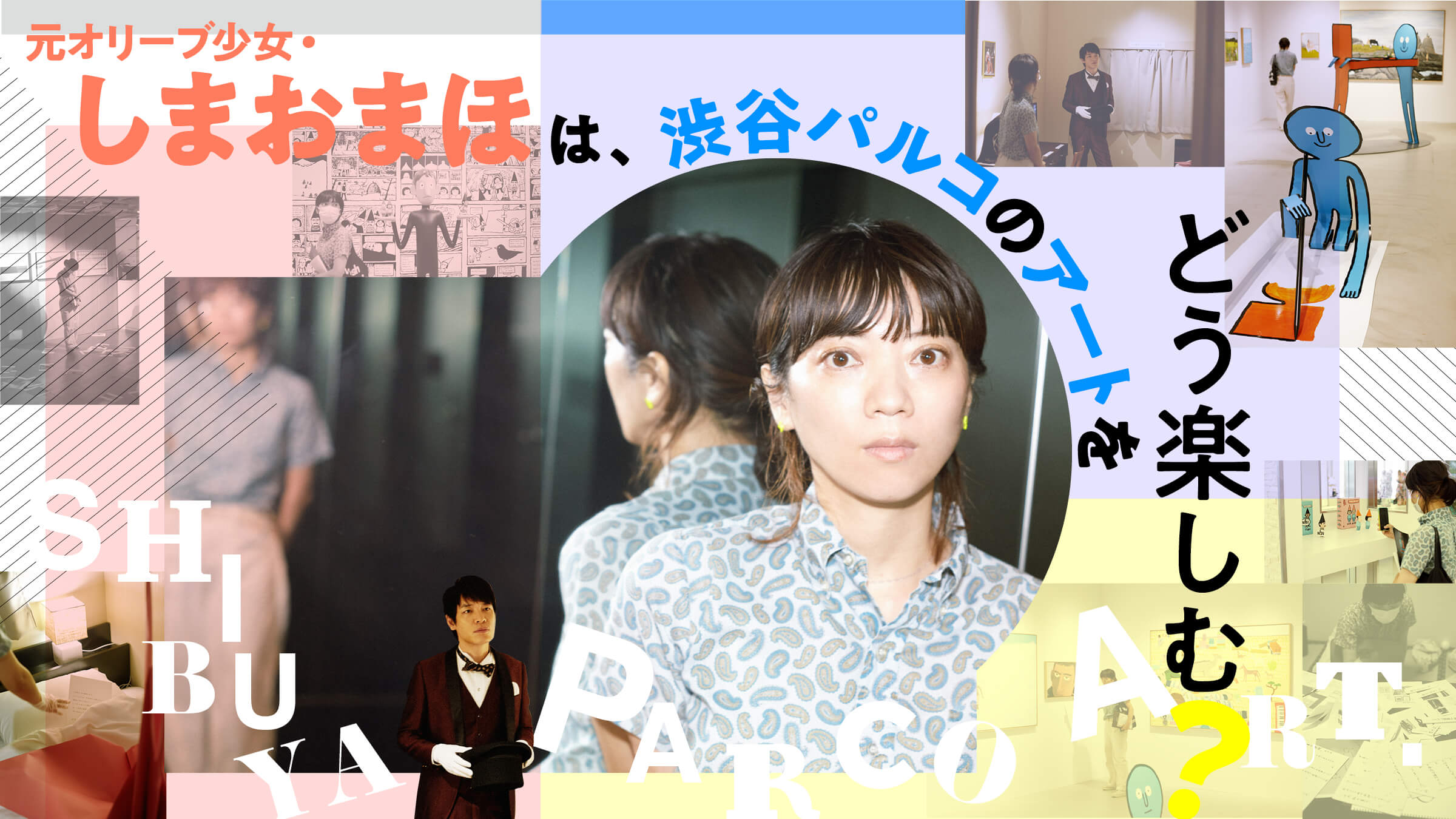
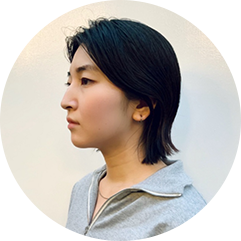
![[FOCUS IT.] AOKIZY, an artist who dominates the Korean art scene, held his first solo exhibition "Planaria" in Japan. What to expect from his respect for Japanese manga and ambiguity, as revealed in an e-mail interview.](https://www.houyhnhnm.jp/wp-content/uploads/2024/06/240605_2584-700x467.jpg)
